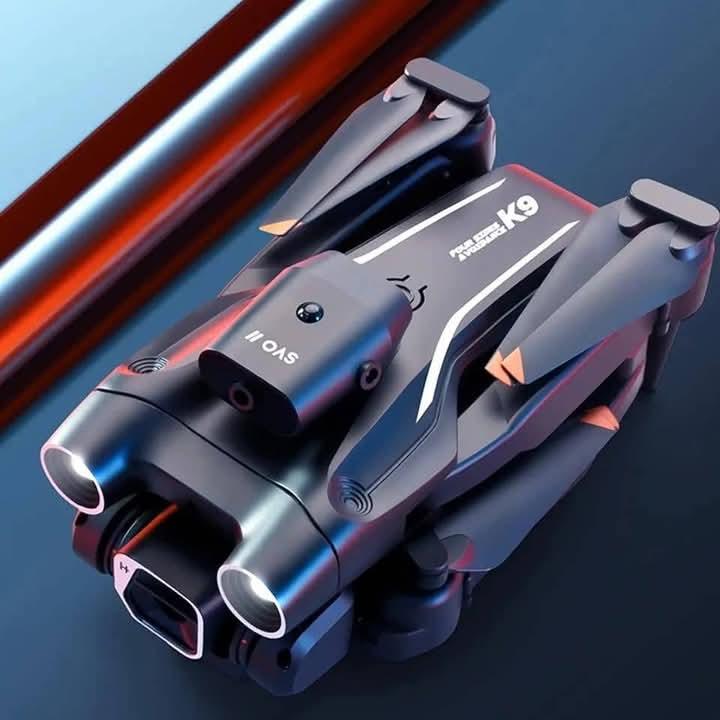The Rise of the AR Prime Market: Transforming the Future of Shopping
The Rise of the AR Prime Market: Transforming the Future of Shopping
Introduction
In the rapidly evolving landscape of retail, Augmented Reality (AR) has emerged as a transformative force, redefining how consumers interact with products and brands. The AR Prime Market, representing the forefront of AR integration in shopping experiences, is poised for exponential growth. According to Credence Research, the global AR shopping market is projected to expand from USD 4.9 billion in 2024 to approximately USD 36.5 billion by 2032, reflecting a compound annual growth rate (CAGR) of 28.5% .
This blog post delves into the dynamics of the AR Prime Market, exploring its growth drivers, applications across various sectors, regional developments, challenges, and future prospects.

Understanding the AR Prime Market
The term "AR Prime Market" encapsulates the leading edge of AR technology applications within the shopping sector. It signifies not just the adoption of AR tools but their strategic implementation to enhance consumer engagement, streamline operations, and drive sales. The AR Prime Market is characterized by innovative solutions that offer immersive and interactive shopping experiences, setting new standards in retail.
Growth Drivers of the AR Prime Market
Several factors contribute to the robust growth of the AR Prime Market:
1. Enhanced Consumer Engagement
AR technology enables consumers to visualize products in real-time, offering virtual try-ons for apparel, accessories, and cosmetics. This immersive experience reduces uncertainty, increases confidence in purchase decisions, and enhances overall customer satisfaction.
2. Technological Advancements
The proliferation of smartphones and AR-capable devices, coupled with advancements in AR software and hardware, has made AR applications more accessible and user-friendly. These technological strides are pivotal in propelling the AR Prime Market forward.
3. E-commerce Integration
The surge in online shopping has necessitated innovative solutions to replicate in-store experiences. AR bridges this gap by allowing consumers to interact with products virtually, thereby enriching the digital shopping journey.
4. Personalized Shopping Experiences
AR facilitates personalized recommendations and tailored shopping experiences by analyzing consumer preferences and behaviors. This personalization fosters customer loyalty and drives repeat business.
5. Competitive Differentiation
Retailers leveraging AR technologies gain a competitive edge by offering unique and engaging shopping experiences. This differentiation is crucial in attracting and retaining customers in a crowded marketplace.
Applications Across Sectors
The AR Prime Market spans various sectors, each harnessing AR's potential to revolutionize shopping experiences.
Fashion and Apparel
In the fashion industry, AR enables virtual fitting rooms where customers can try on clothes virtually, assess fit and style, and make informed purchasing decisions. This technology reduces return rates and enhances customer satisfaction.
Beauty and Cosmetics
Cosmetic brands utilize AR for virtual makeup trials, allowing customers to experiment with different products and shades in real-time. This interactive approach boosts engagement and drives sales.
Home Goods and Furniture
AR applications allow consumers to visualize furniture and home decor items within their living spaces. By overlaying products onto real-world environments, customers can assess aesthetics and fit before making a purchase.
Automotive
Car dealerships and manufacturers employ AR to showcase vehicle features, customization options, and virtual test drives. This immersive experience aids in the decision-making process and enhances customer engagement.
Grocery Shopping
AR enhances grocery shopping by providing nutritional information, recipe suggestions, and personalized promotions through interactive displays and mobile applications.
Regional Developments in the AR Prime Market
The AR Prime Market exhibits varied growth patterns across different regions:
North America
North America leads the AR Prime Market, driven by high adoption rates of advanced technologies and significant investments by major retail players. The region's robust infrastructure and consumer readiness contribute to its dominance.
Europe
Europe follows closely, with retailers embracing AR to enhance customer experiences and streamline operations. The region's focus on innovation and sustainability aligns with AR's capabilities.
Asia-Pacific
The Asia-Pacific region is experiencing rapid growth in the AR Prime Market, fueled by tech-savvy consumers and a burgeoning e-commerce sector. Countries like China, Japan, and South Korea are at the forefront of AR adoption in retail.
Latin America and the Middle East & Africa
These regions are gradually integrating AR into retail, with growing interest in its potential to enhance consumer engagement and drive sales. Infrastructure development and increasing smartphone penetration support this growth.
Challenges Facing the AR Prime Market
Despite its promising trajectory, the AR Prime Market faces several challenges:
High Implementation Costs
The development and deployment of AR solutions can be capital-intensive, posing a barrier for small and medium-sized enterprises (SMEs) seeking to adopt the technology.
Technical Limitations
AR applications require robust hardware and software capabilities. Limitations in device compatibility and performance can hinder widespread adoption.
Consumer Awareness and Acceptance
While awareness of AR is growing, some consumers remain hesitant to embrace the technology. Educating users on AR's benefits and ease of use is essential for broader acceptance.
Data Privacy Concerns
AR applications often collect and process user data to deliver personalized experiences. Ensuring data privacy and security is paramount to maintaining consumer trust.
Future Prospects of the AR Prime Market
The AR Prime Market is poised for continued growth and innovation. Emerging trends and developments include:
Integration with Artificial Intelligence (AI)
Combining AR with AI enhances personalization, enabling more accurate product recommendations and interactive experiences tailored to individual preferences.
Expansion into New Retail Segments
Beyond traditional retail, AR is making inroads into sectors like real estate, healthcare, and education, offering immersive experiences that facilitate decision-making and learning.
Development of AR Wearables
Advancements in AR wearables, such as smart glasses, will further integrate AR into daily shopping experiences, providing hands-free and seamless interactions.
Enhanced Social Shopping Experiences
AR is transforming social media platforms into shopping hubs, allowing users to try products virtually and make purchases directly through social channels.
Conclusion
The AR Prime Market represents a significant shift in the retail landscape, offering immersive, personalized, and efficient shopping experiences. As technology continues to evolve, AR's role in shaping consumer behavior and expectations will only intensify. Retailers and brands that embrace and invest in AR technologies stand to gain a competitive advantage, driving growth and innovation in the years to come.
Note: The information presented in this blog post is based on data available as of May 15, 2025, and may be subject to change as new developments occur in the AR shopping market.
 English
English






 Electronic Product
Electronic Product




